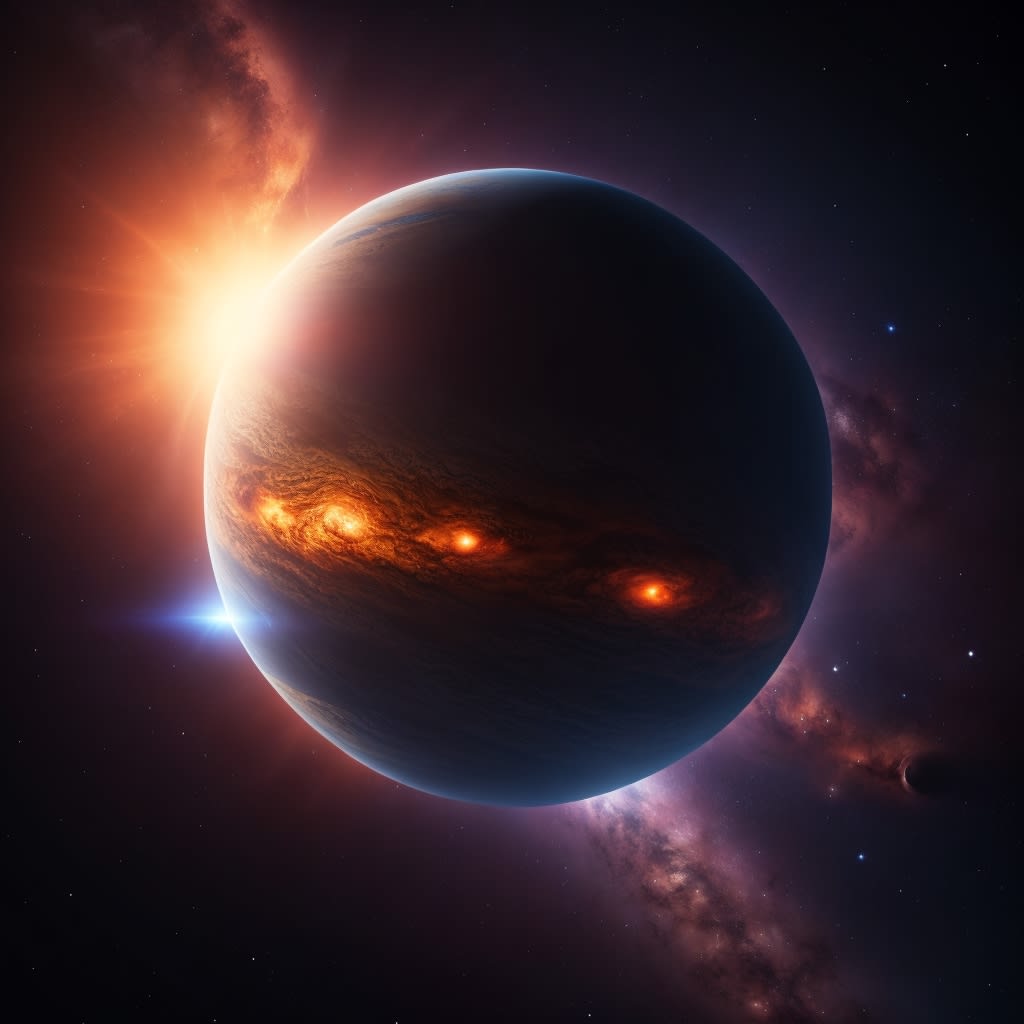
As time passes, our planet is becoming inhabitable. So, it is time for us to think about another planet's colonization. In this context, we must look out for a more habitable planet for our sustenance and existence as well. Therefore, before discovering an Exoplanet, you must judge the required elements minutely. Initially, it is very difficult for the astronomers to find it with dead accuracy. The reason is that they are always more than hundreds of lightyears away. Therefore, practically it is impossible to explore the exoplanet from the nearest distances as well. Still, there is a hope that the modern scientific instruments make it happen to be accessible to the exoplanet and gets the status and state of its existence as well.
Orbital Period
The orbital period is an important proposition for an exoplanet because it determines how times it will take to complete one orbit around its host star. The Longest orbital period of an exoplanet, COCONUTS-2 is 1.1 million years whereas the shortest orbital period of an exoplanet, SWIFT J1756.9-2508b is 48 minutes, 56.5 seconds.
Radius
The radius of an exoplanet, when combined with its mass, allows scientists to calculate its average density. This density information can offer clues about the planet's composition. A planet with a low density may be predominantly composed of gas, like a gas giant, while a high-density planet may be rocky or metallic. The radius of exoplanets can vary widely, from gas giants like Jupiter with radii of tens of thousands of kilometers to rocky exoplanets like Earth with much smaller radii. Exoplanets can be categorized into two broad groups: terrestrial planets (rocky) and gas giants (large and predominantly gaseous). Terrestrial exoplanets typically have radii in a range like Earth's, while gas giants have significantly larger radii. Atmosphere: If you like to get a habitable atmosphere in an exoplanet, then you must explore its inner and outer atmospheric parameters. Moreover, the atmosphere should have oxygenating particles, magnetic field, gravity, and others elements as well. Even, it is important to find the life supporting gases like hydrogen, methane, carbon dioxide, and other gaseous materials.
Liquid Water
The existing the presence of water in an exoplanet will invite the expectation is that there may be a n advance civilization is existing and sustaining as well. The exoplanets like Kepler-138 c (218.1 light years away from the solar system) and Kepler-138 d are the great examples of the watery worlds where water is found in the large proportion. Generally, the water found in the exoplanets in three forms like liquid, ice, and vapor respectively. But when an exoplanet has all three forms of water then it has the highest chance of habitable living organism as well.
Temperature
The average temperature on the exoplanet's surface or in its atmosphere. Practically, the temperature of the exoplanet varies due to the different atmospheric, geological, and climatic parameters. Some exoplanets would have more than minus 250° to plus 250° temperature. The exoplanet, OGLE-2005-BLG-390Lb has the coldest temperature of -223° centigrade.
Surface Features
The important feature of an exoplanet is to have surface which could be such as mountains, valleys, or oceans. As it is essential for determining its past and current state. Moreover, it is true that it helps to find the other parameters of the exoplanet as well.
Magnetic Field
The finding of the magnetic field in an exoplanet is an essential feature for investigating its form. It is found that a magnetic field will help to determine the composition of the exoplanet’s interior and its function as well. Moreover, if there is no magnetic field in the exoplanet, then its is small and have no ability to develop any magnetic field as well. Practically if magnetic field exist in exoplanet, then its core in in molten state and in motion state. You should keep in mind that younger exoplanet has a stronger magnetic field as the older exoplanet has weaker magnetic field as well.
Day-Night Cycle
The length of a day-night on the exoplanet depends on the various elements like atmosphere, orbital period, axial tilt, host star type, and rotational period as well. The rotation period of the exoplanet determines the length of its day and night. The exoplanet's orbital period, or its "year," is the time it takes to complete one orbit around its host star. This period influences the changing seasons and the variation in day length throughout the year. The axial tilt of the exoplanet plays a role in the variation of day length and the seasons, just as it does on Earth. The tilt determines the angle at which sunlight strikes different parts of the planet's surface during its orbit around the star.
Atmospheric Pressure
The size and mass of the exoplanet takes a great role in its atmospheric pressure. Larger, more massive exoplanets are more likely to have thicker atmospheres with higher pressures. The composition of the exoplanet's atmosphere is critical. Different gases have different properties, and the combination of gases can lead to varying atmospheric pressures. Planets closer to their host stars, in the "habitable zone" or "Goldilocks zone," may have higher temperatures and may be more likely to retain water vapor in their atmospheres, potentially leading to higher pressures. If an exoplanet has a weak gravitational field and is exposed to intense solar wind or radiation, it may lose its atmosphere gradually over time, leading to lower atmospheric pressures.
Surface Gravity
The mass of the exoplanet is a fundamental factor in determining its surface gravity. A planet with greater mass will generally have a stronger gravitational pull. An exoplanet with a larger radius will generally have a lower surface gravity for a given mass, and an exoplanet with a smaller radius will have a higher surface gravity. In some cases, the surface gravity of exoplanets may be influenced by tidal forces from their host stars.
Magnetosphere
When the solar wind encounters the magnetosphere, it gets deflected, creating a region where charged particles are trapped and spiral along magnetic field lines. This region is known as the magnetosphere. The strength and size of a planet's magnetosphere can be influenced by its distance from its host star, the strength of the stellar wind, and the planet's magnetic field strength. Some exoplanets are tidally locked, meaning one side permanently faces the host star (the "day" side), and the other side is in perpetual darkness (the "night" side). A strong magnetosphere is crucial for protecting an exoplanet's atmosphere from erosion due to the solar wind.
Exomoon
Exomoons have generated interest because they could potentially provide environments for life. Moons with stable orbits around gas giant exoplanets might have conditions suitable for habitability, including the presence of liquid water and a protective magnetic field. The conditions on exomoons will depend on factors like their distance from the host planet, the planet's distance from the host star, and the moon's composition. Tidal forces from the host planet can have significant effects on the exomoon's geology and climate. These forces can lead to tidal heating, which may provide a source of internal heat for geological activity and could potentially influence habitability.
Tidal Forces
The most significant tidal forces acting on an exoplanet are generated by its host star. The gravitational pull of the host star results in the formation of tidal bulges on the exoplanet. One tidal bulge is oriented toward the star, while the other is on the opposite side, facing away from the star. As the planet orbits the star, these tidal bulges flex and change shape due to the varying gravitational force. The constant flexing and relaxation of the exoplanet due to tidal forces can generate heat within the planet, a phenomenon known as tidal heating. This internal heat can drive geological activity, including volcanic eruptions, and maintain subsurface oceans if the exoplanet has one.
Habitability
An exoplanet must have a temperature range that allows liquid water to exist on its surface. Water is essential for life as we know it. The planet's distance from its host star plays a crucial role in determining its surface temperature. An exoplanet's atmosphere is critical for regulating temperature, providing essential gases like oxygen and carbon dioxide, and shielding against harmful radiation. The composition and stability of the atmosphere, as well as its pressure and density, influence habitability. A strong magnetic field is important for protecting a planet's atmosphere from being stripped away by solar wind and cosmic radiation. It can also shield the surface from harmful solar and cosmic rays. Liquid water is considered one of the most critical ingredients for life. An exoplanet's ability to retain liquid water on its surface depends on its temperature, atmospheric pressure, and the presence of water sources like oceans, lakes, or rivers. The availability of key chemical compounds, such as carbon, nitrogen, oxygen, and phosphorus, is essential for life as we know it. The planet's chemistry and the presence of these elements influence its potential habitability. Exoplanet Classification: Whether the exoplanet is terrestrial, gas giant, ice giant, or some other type.
Exoplanets, planets that exist beyond our solar system, have revolutionized our understanding of the cosmos and the potential for life beyond Earth. Their discovery and study have opened a new frontier in astronomy, offering a wealth of knowledge and profound implications for the search for extraterrestrial life. One of the most captivating aspects of exoplanets is their potential habitability. Scientists are actively seeking planets within the habitable zone, where conditions might allow for liquid water to exist—a key ingredient for life as we know it. In summary, exoplanets represent a scientific frontier that continues to yield exciting discoveries and reshape our understanding of the universe. They hold the promise of answering age-old questions about the prevalence of life beyond Earth and the vast diversity of planetary systems. As technology advances and our knowledge deepens, the study of exoplanets is poised to remain a central focus of astronomy and astrobiology for years to come.
About the Creator
Manik Roy
Writer | Photographer | Handwriting Expert | AI Artist






Comments (1)
Great work! Fantastic job 💙♥️💚🤎🩷🩵💖🧡🧡❤️💕💜🩶